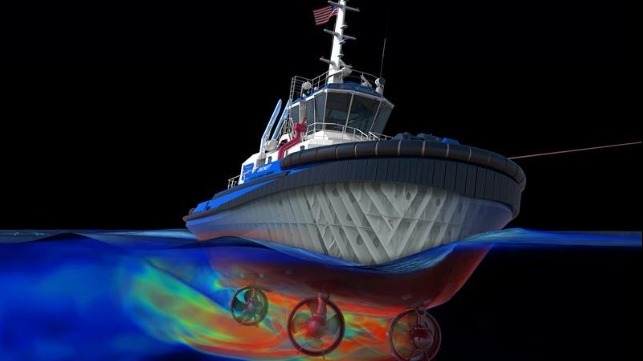First US Vessel Totally Designed and Verified in 3D Being Constructed

In a new advancement in the use of technology in the design and certification of vessels, construction is beginning for the first commercial U.S. vessel designed, built, and verified using an end-to-end 3D design process. According to the partners in the project, a purely 3D process reduces costs and time investment, while streamlining interaction between all stakeholders throughout the design, verification, and construction phases, without compromising safety.
“This landmark achievement sets the bar for future projects both in the U.S. and internationally,” said Christopher J. Wiernicki, ABS Chairman, President and CEO. “Together with our partners, we have realized a long-held dream of the industry to leave behind 2D paper plans and move to the next generation of vessel production. ABS is proud to help unlock this capability and to be genuinely leading the industry in this area, once again delivering the advantages of digital classification today.”
Designed by Robert Allan Ltd., the Advanced Rotortug® (ART), is designed to escort vessels and offshore assets at the Port of Corpus Christi. It will receive its Certificate of Inspection from the United States Coast Guard and will be built and operated by Signet Maritime to ABS Class. It becomes the first commercial vessel in the U.S. to be produced using only 3D models in design and construction for all structures.
According to ABS, the advantages of this approach are significant. As an organization, they are confident that once the industry develops the infrastructure to handle 3D models in shipyards, a pure 3D process will become the default approach. ABS has been leading the industry in the development and adoption of 3D modeling. ABS was the first to develop a process for ingesting 3D models into class software to allow 3D model-based reviews in 2018. Two years later, ABS became the first classification organization to accept 3D models for class surveys.
“As Naval Architects, we find ourselves developing ship structure in 3D more than ever, even at the basic design stage for new vessels,” said Mike Fitzpatrick, CEO of Robert Allan. “We believe that delivering 3D models instead of traditional 2D drawings benefits all stakeholders – us as the designer, Class societies, clients, shipyards, and equipment suppliers. ‘Direct Design’ of structure in 3D not only streamlines the transition to production design modeling for the shipyard but also gives us as naval architects earlier estimates of weights and centers, steel quantities as well as the means to check for structural interferences.”
Fitzpatrick explains that not only has it become easier to exchange complex structural design information through the 3D modeling process, but the time from the basic design stage to the production design stage is shortened.
The understanding and fidelity of the construction model represent a milestone in the history of the U.S. maritime industry. 3D design review ensures the designer, engineer, production manager, fitter, welder, and surveyor all work from the same complete model.
“Each individual has access to both the micro (component) and macro (complete assembly) with which they are working to better understand the bracket, frame, or bulkhead as it relates to the module, section, and ship,” said Timothy S. McCallum, Signet Vice President, Engineering and Dynamics. “Providing that level of awareness to all participants in the process will give ABS, Robert Allan, and Signet a superior finished product and contribute to an overall safer waterway through technological advancement.”
